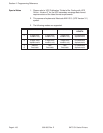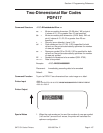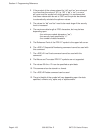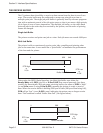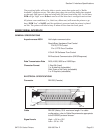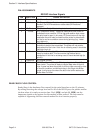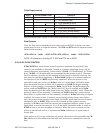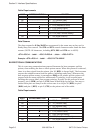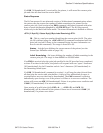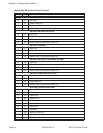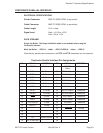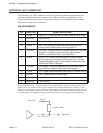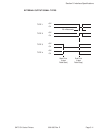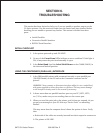
Cable Requirements
Data Streams
The data streams for X-On/X-Off are constructed in the same way as they are for
Ready/Busy flow control. The STX and ETX control characters must frame the data
stream. (NOTE: All characters, including STX, ESC and ETX are in ASCII).
<STX><ESC>A . . Job#1 . . <ESC>Z<ESC>A . . Job#n . . <ESC>Z<ETX>
Example: <STX><ESC>A . . Job#1 . . <ESC>Z<ETX>XXXXX
BI-DIRECTIONAL COMMUNICATIONS
This is a two-way communications protocol between the host computer and the
printer, thus enabling the host to check printer status. When this protocol is selected,
there is no busy signal from the printer (pin 20, DTR, is always high). The host must
request the complete status from the printer, including ready/busy. Whenever the
host requests printer status, it transmits an ENQ to the printer and the printer will
respond with its status within five milliseconds. If printing, it will respond upon
finishing the current label, then resume printing. In order for this protocol to work
properly, pin 6 (DTR) and pin 5 (CTS) must be held high by the host. One way to
ensure these pins are always in the correct state is to tie pin 20 (DTR)topin6
(DSR) and pin 4 (RTS)topin5(CTS) at the printer end of the cable.
Cable Requirements
HOST INTERCONNECTION PRINTER
FG
←→
1 FG (Frame Ground)
RD
←
2 TD (Transmit Data)
TD
→
3 RD (Receive Data)
4 RTS (Request to Send)
5 CTS (Clear to Send)
6 DSR (Data Set Ready)
20 DTR (Data Terminal Ready)
SG
←→
7 SG (Signal Ground)
HOST INTERCONNECTION PRINTER
FG
←→
1 FG (Frame Ground)
RD
←
2 TD (Transmit Data)
TD
→
3 RD (Receive Data)
4 RTS (Request to Send)
5 CTS (Clear to Send)
6 DSR (Data Set Ready)
20 DTR (Data Terminal Ready)
SG
←→
7 SG (Signal Ground)
Section 5. Interface Specifications
Page5-69001035Rev.ESATOCLSeriesPrinters



